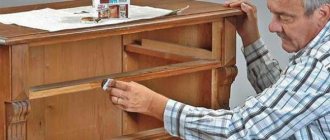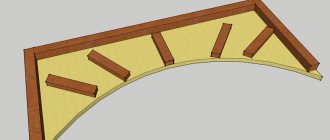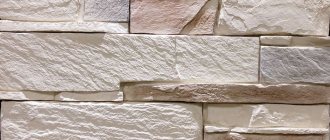Tire bead sealants come in two types. The first is intended for processing the bead ring of a tubeless tire before installing it on the rim. The second type of bead sealants for tires is applied when roughening the tire, which slightly damages its layer, which ensures the tightness of the inner volume of the wheel. Some sealants and others are more necessary for workers and owners of tire workshops, where the relevant work is carried out on a large (industrial) scale. Moreover, as a rule, the volume of packaging of these products is quite large.
The store offers a variety of tire rim sealants (sometimes called mastic or wax). They are selected based on information about their type, properties, and conditions of use, and price and volume come last, because the main thing is that the sealant for installing a tubeless tube is of high quality. In addition, it is useful to take into account reviews and tests about sealants for rims of tubeless tires, left by specialists on various resources on the Internet. The following material presents a non-advertising rating of such popular products used by tire shop workers. It looks like this:
| Product name | Brief description and features | Package volume, ml/mg | Price as of winter 2018/2019, rubles |
| Tip Top Side Seal | One of the most popular onboard sealants. The main advantage is its gel-like state in which it is located in the tire. This makes it possible not only to seal it on the wheel rim, but also if damaged, the sealant flows to the puncture site and immediately seals it. | 1 liter; 5 liters. | 700 rubles; 2500 rubles |
| Bead sealant TECH Bead Sealer | Typically used in professional tire shops. Can be used for processing rubber of cars and trucks. 945 ml cans, enough to process 68. 70 wheels with a diameter of 13 to 16 inches. | 945 | 1000 |
| Bead Sealer Rossvik | Domestic popular sealant, used for treating tires of cars and trucks. The packaging includes an application brush. It comes off the surface well when removing rubber from the rim. | 500 ml; 1000 ml | 300 rubles; 600 rubles. |
| Bead sealant for tubeless tires BHZ | Widely used in the Russian Federation and other post-Soviet countries. Using sealant, you can “heal” cracks up to 3 mm in size, but to do this it must be applied in two or three layers with intermediate drying of each of them. The package includes a brush for easy application of the product to the surface to be treated. | 800 | 500 |
| Side sealant with Unicord brush | An inexpensive and fairly effective tire bead sealant based on airtight rubber. Often used by small tire shops. | 1000 | 500 |
Types of sealants for tubeless tires
In order to answer the question of why tire sealant is needed, it is necessary to clarify that these products are divided into two types: sealing (used for tire fitting) and repair sealants (for restoring the tubeless layer on the tire).
Sealants for sealing can also be divided into two subtypes. The first are the so-called “blacks”. Their task is to seal the inner space of a tubeless tire and eliminate air leakage along the side of the tire in the case when wheels with high mileage and/or are simply old are used (rubber tends to crack and dry out over time).
As a rule, such sealants are applied in several layers (usually two, maximum three layers) with intermediate drying for 5...10 minutes. In most tire shops, “black” sealants are used by craftsmen when performing seasonal tire replacements on cars that car owners turn to them. The peculiarity of such sealants is that they dry to form an elastic film, the shape of which exactly repeats the voids between the tire bead and the corduroy. However, the fact that sealants harden is their disadvantage, especially when driving the car on roads with poor road surfaces.
The fact is that there is always a risk of damage to the tire side sealants. This is due to driving on bad roads, off-road, especially at high speed. At the same time, additional mechanical stress is placed on the wheels, and in particular, the sealant, which can lead to the appearance of microcracks in it. And this automatically entails depressurization and gradual air leakage. To get rid of it, you need to seek help from a tire repair shop.
However, there are “black” sealants that do not dry out. This is precisely their advantage. Thus, when a similar microcrack occurs, the sealant, under the pressure of the escaping air in a liquid state, moves to the localization site and seals it, similar to sealants for tire repair.
The second type of sealant is tubeless sealant. They are applied to rough areas on the side surfaces of the tire before installing the patch inside the tire.
During the roughening process, the rubber layer that directly retains air is broken. Therefore, in order to maintain pressure after such treatment, the tire must be treated with an appropriate sealant. Moreover, you can not process the entire perimeter of the layer, but only that part that was damaged during the roughening process and after installing the patch, and also apply it to the edges of the patch.
Why is side sealing necessary?
This manipulation is necessary to prevent air leakage between the disc and the tire. When the service station employee is sure that your tire is not punctured, then he will begin to check the contact point between the tire and the disk. The reasons for air loss in this place can be different: from deformation of the disc itself to the appearance of rust on the inside of the rim. In any of the options, it is necessary to repair the damage and treat the tire bead with sealant. This manipulation will help eliminate the air leak and you will get behind the wheel again.
Do I need to use sealant?
On thematic forums on the Internet you can often find heated debates about whether it makes sense to use sealants for the sidewall. There are many contradictory arguments and examples on this score. Omitting unnecessary considerations, we can say that bead sealants (preventive) are recommended to be used when repairing low-quality or old (with significant mileage) tires and the disc itself with defects. In this case, its tubeless layer adjacent directly to the surface of the wheel rim is leaky, and this is the direct cause of the risk of tire depressurization.
If the car has good new tires installed, especially on a non-bent disc, then the use of sealant is not necessary. And in some cases it is even harmful. For example, if the elastic adjacent rubber layer is very soft, and the sealant takes on a rigid shape after drying, this is very harmful to the tire. In addition, the wheel may become depressurized. This situation is due precisely to the fact that the tire will sit rigidly in its seat, and when driving on a bad road (especially at high speed), the sealant can develop a microcrack through which air will escape.
Some car enthusiasts note that due to the use of sealants, if necessary, it is very difficult to separate the tire from the rim. In fact, such a problem can arise not only due to the use of the mentioned means, but also due to a mismatch between the width of the tire and the rim. Therefore, there are three solutions here. The first (and more correct) is to use the “correct” rims that are most suitable for a specific tire. The second is the use of softer rubber, that is, with a more elastic side. The third is the use of special liquids to dissolve sealants. An example of such a product is the Bead Breaker dismantling liquid from the Tech company (article number 734Q).
As for repair sealants, which are applied after the aforementioned roughening, the situation here is more obvious. If a corresponding repair operation was carried out to restore the tire, then the use of such a sealant is also very desirable. Otherwise, there is no guarantee that the repaired tire will not leak air exactly in the place where the roughening was carried out.
It makes sense to briefly discuss how sealant should be applied to the tire bead. First of all, you need to thoroughly clean the disk (in particular, its end side, which is in direct contact with the wheel rubber) from dirt, dust, rust, peeling paint and other possible damage.
Wheel cleaners
A special cleaner is used to clean wheel rims. It can be acidic or non-acidic. These products wash off bitumen and other dirt well. According to tests, the best rating includes: Tortal Wax, Koch, Liquid Moly Read more
Some car enthusiasts sand the surface of the disc using sandpaper or special sanding brushes placed on a drill or grinder. The same applies to the surface of the tire. It should be cleaned as much as possible from dust, dirt, and possible deposits. And only after that, using a brush (or other similar device), apply mastic to the edge of the sidewall of the tire for its further installation on the disk.
Sealing tire beads: what is it and how to do it
Car enthusiast forums are filled with pressing questions about the tire sealing process. Most car manufacturers have long abandoned tubes on tires, and a tubeless tire should not allow a single drop of air to pass through at the junction with the rim. After all, depressurization of rubber threatens both direct damage and deformation of other elements of the wheel.
Many drivers advise their colleagues to carry out the procedure themselves using special means, however, professionals insist that the effect of such manipulations will only be enough to easily get to a tire shop and entrust the wheels to a specialist.
It is in vain that car enthusiasts do not pay due attention to wheels. Experts from the site shinomontagpro are confident that most accidents on the roads occur precisely for reasons related to the “shoes” of the car. Therefore, it is necessary to promptly diagnose the vehicle and if even the slightest distance between the tire and the disk or insufficient pressure level is detected, immediately go to specialists to solve the problem.
However, there are situations in which it is necessary to act quickly, and there may not be a service station or tire service nearby. And only in this case should you be able to cope with the sealing of tubeless wheels yourself.
Best Tire Bead Sealants
Currently, there are quite a lot of different sealants on sale for mounting tubeless tires. Their selection must be made based primarily on their type and purpose. The presented rating of the best tire bead sealants is based on an analysis of tests and reviews of car owners who have used certain similar compounds at different times. The list is not commercial in nature and does not advertise any product presented in it. Its goal is to help the tire shop or car enthusiast buy the tire bead sealant that is most suitable for their tasks.
Tip Top Side Seal
One of the highest quality and most popular tire bead sealants. Produced by Rema tip top in Germany. The popularity of this product is due to the fact that after application to the surface of the tire and during the operation of the tire, it does not harden, but is constantly in a gel-like state. This is its competitive advantage, since thanks to this factor it not only reliably protects the internal volume of the tire from depressurization, but also if such a nuisance occurs, it will effectively protect the wheel from it. Due to the property of transitioning from a gel-like state to a solid upon contact with air, that is, vulcanizing rubber.
The instructions indicate that using Tip Top sealant you can get rid of cracks up to 3 mm in size. The basis of the sealant is airtight rubber. When dismantling the tire, it does not cause problems, that is, the sealant easily peels off from the disc and rubber. Real tests show that this sealant is truly distinguished by its quality, and many professional workshops use it in their practice.
Tip Top Bead Sealer is sold in packages of two volumes - one liter and five liters. Accordingly, their prices as of winter 2018/2019 are about 700 and 2500 rubles.
Bead sealant TECH Bead Sealer
Tech Bead Sealer is designed to seal the interior of a tubeless tire by providing a protective layer between the rim and the tire. It is noted that it can be used even if the disc has slight irregularities. It is also one of the most popular products in its market segment. As a rule, it is used in professional tire shops. The composition is flammable, so it should not be heated or stored in close proximity to open flame sources. It is undesirable to inhale it, and the sealant should not be allowed to come into contact with the skin, much less the eyes. One package is enough to process about 68...70 passenger car tires (with a diameter of 13 to 16 inches).
Tech onboard sealant is sold in a 945 ml metal can. Its price as of the above period is about 1000 rubles.
Bead Sealer Rossvik
Bead Sealer bead sealant from the famous Russian company Rossvik is one of the most popular similar products in its market segment. Can be used to treat wheels of both cars and trucks. It is noted that the sealant is capable of sealing damage up to 3 mm in size. However, for this it is necessary to apply two or three layers of the product with preliminary drying of each of them. To do this you need to use a traditional technical hair dryer. The sealant is based on airtight rubber, which does not shrink and dries quickly. Even with long-term use of the wheel, its removal is no problem. If you need to eliminate air leaks on the wheels of trucks, you can use soft porous paper together with the sealant. This will reduce the consumption of sealant while maintaining its high efficiency values.
It is very popular among car enthusiasts and tire service station specialists due to the high efficiency of the product, as well as its low price. Respectively. Rossvik bead sealant is recommended for purchase by anyone who regularly engages in tire fitting work. Please note that there are packages that include a brush for applying the product to the surface to be treated, and there are packages without it!
Sold in various packages, including 500 ml and 1000 ml cans. The article number of the popular 1000 ml package is GB-1000K. Its price is about 600 rubles.
Bead sealant for tubeless tires BHZ
Bead sealant for tubeless tires “BKhZ” (abbreviation BKhZ) means that this product was produced by the Barnaul Chemical Plant. Designed to create a strong seal and eliminate air leaks that may exist between the rim and the tire bead. The instructions indicate that the BHZ side sealant is capable of eliminating cracks up to 3 mm wide. However, to achieve such a high result, several layers must be applied to the rubber with intermediate drying. The instructions suggest degreasing the area before applying BHZ sealant. This will ensure better contact and extend the durability of its use. The sealant has a high drying speed.
The product can be used as a preventative and also as a repair. In the first case, it can be used when regularly replacing tires from summer to winter and vice versa. In the second case, using a sealant you can get rid of existing air leaks at the points of contact between the disc and the rubber. That is, apply it locally. However, if the size of the damage site exceeds 3 mm, then this sealant (like other similar means) will not help, so you need to mechanically repair the disk or look for the cause of the air leak in another circumstance.
Sold in an 800 ml tin, the kit includes a brush for applying the product to the surface to be treated. The price of one package is about 500 rubles.
Side sealant with Unicord brush
Unicord sealant is produced by the company of the same name in the CIS. As the name implies, the kit includes a brush for applying the composition to the surface to be treated. The sealant can be used to treat tires of both cars and trucks. It is especially effective to use for old tires that already have a worn inner layer. It is noted that the sealant is able to “heal” cracks up to 3 mm in size. Easily removed from the surface when removing the tire. The composition is based on airtight rubber.
Reviews found on the Internet suggest that Unicord bead sealant is a very effective and, most importantly, inexpensive product, which is why it is quite popular among workers at various service stations and tire shops.
Sold in a 1000 ml metal can. Its price is about 500 rubles.
This list can be continued further, especially since now the market is constantly being replenished with new sealing compounds. If you have had experience using any of these sealants for mounting tires, please express your opinion on how it works. But not everyone buys such a shaving brush; when installing it themselves, car owners seal it between the tire and the disk with other, improvised means.
How to use sealant
The process of pouring the sealing agent consists of the following steps:
- unscrewing the nipple using a specialized tool or pliers;
- When pouring the selected sealant, provided that a disposable package is used (volume 60 ml), you need to place the spout in the nipple hole and squeeze out the liquid. If the bottle is larger, it is advisable to use a syringe without a needle;
- You can also fill the sealant by dismantling the wheel, which most mechanics recommend doing to avoid clogging the nipple hole;
- Next you need to pump up the tire;
- The final step is to install the wheel and spin it so that the liquid spreads throughout the tire.
After filling, be sure to check after a third of an hour whether the tire is flat.
Depending on the type of tire and bicycle, the volume of sealing agent varies:
- Road bikes and road bikes require 40 to 60 ml per wheel;
- for mountain bikes with wheels from 26 to 27.5 inches, use approximately 75-90 ml of sealant;
- mountain bikes with 29-inch tires need from 90 to 120 ml per wheel;
- for fat bikes you will need 125 ml of liquid.
If the nipple core cannot be removed, it is better to purchase sealant in a special bottle with a nozzle designed to be screwed onto the nipple.
How to make your own tire sealant
There is a so-called “folk” recipe, according to which you can prepare homemade tire sealant. Thus, almost all factory-made products contain rubber, which is found in “raw rubber”. Accordingly, in order to make a sealant for the cord of a tubeless tire with your own hands, you need to buy that same raw rubber and simply soak it in gasoline.
However, the subtlety here is to purchase imported rubber, since, unfortunately, domestic products contain a lot of impurities, and there may be very little rubber or it will be of poor quality. As for gasoline, you can use almost any available gasoline, not necessarily the most expensive and high-octane. Some auto repairmen use kerosene and even diesel fuel for these purposes. But still, gasoline will be a better solution in this case.
Tire sealant: useless product or panacea?
We can say with complete confidence that every motorist sooner or later faces such a problem as a punctured tire. And unfortunately, there is not always a spare wheel in the car. Sometimes, due to the absence of a fifth wheel, space in the trunk is freed up, sometimes it is loaned to friends or acquaintances at the wrong time, and in some cases, even two wheels can be punctured at the same time. In this case, tire sealant can come to the rescue.
It cannot be said that this is a panacea for the problem that has arisen, but sometimes such a remedy helps out the driver and allows him to reach the nearest service station.
see also
Comments 48
Update information: having pumped up to 2.5 after the ride and arrived home, I noticed that the poisoning had stopped.
Even without a camera, my nipple was cut off. when I didn’t notice in time that I had taken off my shoes.
It was necessary to drift less simply))
They smeared me with salidol and it was fine
Why didn't you install cameras? I read that you have to have a tubeless tube to etch your tires. And who is so smart who told you this? I set 500 with cameras and also asked the master to miss the mark. He said, “that the wheel will be 80 rubles more expensive.” To which I replied, “go ahead.” I smeared it with some kind of special fuel oil (I don’t know the name). Missed both sides. I also heard that they smear it with some kind of “glass glue”. But there, according to rumors, you can only cut down the cover with an ax.
If there’s a camera standing there, you’re going to shoot it, and then you’re going to sort out the shit, then it’ll definitely cut off your nipple.
The camera is less likely to be messed with. During my stay I never disassembled it. It's up to you.
Place your camera and feel free to go up to o.5, although Safari has its own specifics))))
What exactly are the specifics, please expand on the topic?
specificity is that the quality is not stable and different kits behave differently
I didn't notice any difference from deflated to 0.5 and inflated to 1.5. The ride is just 0.5 softer.
Or badlocks or ride at 2.5 pressure. Everything else is bullshit. The glass glue will also fall off, not immediately, but it will fall off. Dirt and sand will clog in any way...
The stupidest things are usually written in a peremptory tone...











